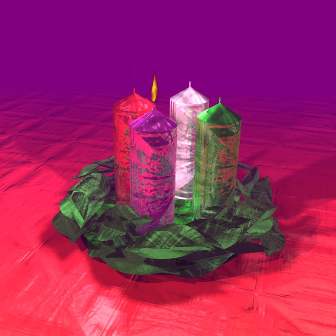 |
ALL TIMES, ALL SEASONS OBEY YOUR LAWS. ADVENT – WAITING FOR THE LORD. Advent (the name means ‘coming’) is the start of the church’s year and runs from the Sunday that falls on or closest to the 30th of November. It ends with the first evening prayer of Christmas. It is a season of reflection and preparation, of hope and anticipation as we wait for the coming of Christ - at Christmas, at the end of our lives and at the end of time. Although the ‘Gloria’ is omitted, Advent is less severe than Lent: flowers can still decorate the church (in moderation), music, although reduced, is allowed and the Gospel acclamation still includes the word ‘alleluia’. “...Advent is a season of devout and joyful expectation.” There are always four Sundays in Advent regardless of what day of the week Christmas Day falls on. The third is known as Gaudete Sunday and rose vestments may be worn – otherwise the colour is purple. The origins of Advent go back to the early centuries of the church. In Spain and Gaul (modern France) a period of fast was observed before the Feat of the Epiphany (6th January) the original feast of Christ’s birth and an important date for Baptisms. By the end of the fifth century we have the first written evidence of Advent as a time of preparation. By the middle of the sixth century the beginnings of an Advent liturgy can be seen in Rome. By the time of Pope Gregory the Great (590-604) the four Sundays of Advent are being celebrated. This was not universal and the length of Advent could vary from diocese to diocese – Milan still celebrates Advent with six Sundays. We owe the omission of the Gloria, something of its penitential character and the purple vestments to the influence from Gaul on the Roman liturgy in the twelfth century. The Gloria, “... is not omitted for the same reason as it is omitted in Lent, but in order that on the night of Christmas the angels’ song may ring out once again in all its newness.” |
||
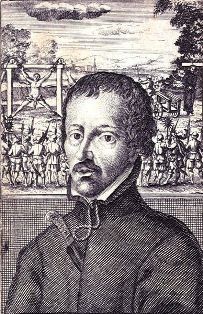 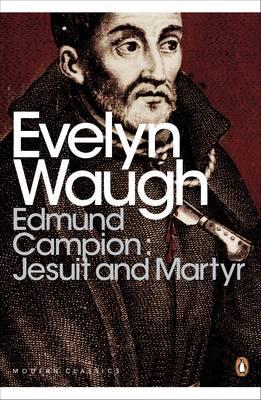 |
1st December - Feast of St. Edmund Campion, Priest and Martyr. Born - 25 January 1540, London, Kingdom of England Died - 1 December 1581 (aged 41), Tyburn, Kingdom of England Venerated in - Catholic Church Beatified - 9 December 1886, Rome by Pope Leo XIII Canonized - 25 October 1970, Rome by Pope Paul VI Feast - 1 December Attributes - Knife in chest, noose around neck Patronage - United Kingdom Born in 1540 the son of a London bookseller, Edmund Campion was educated at Christ’s Hospital and at St. John’s College, Oxford where he became a Junior Fellow in 1557. His brilliance won him many friends including the patronage of the Earl of Leicester. When Queen Elizabeth visited Oxford in 1566, Campion was chosen as the orator to welcome her. He was ordained as a deacon in the Church of England in 1569 but was openly uncertain of his religious future. Following a spell at the University of Dublin (later Trinity College) he made his way to the English College at Douai where he was ordained a subdeacon in 1573. The same year he left for Rome to join the Jesuits and was ordained a priest in 1578. He returned to England disguised as a jewel merchant and his eloquence, learning, personality, courage and daring gave new heart to the dispirited English Catholics while his printing press and preaching together disseminated a vigorous and up to date Catholicism that the government could not ignore. Campion was extremely mobile in his mission working in Lancashire, Yorkshire, and the Midlands. At Stonor in Oxfordshire he wrote his most famous work Decem Rationes, an open and reasoned challenge to Protestants to debate with him the foundations of Catholicism. He was arrested at Lyford Grange in Berkshire and imprisoned in the Tower where bribes, torture and theological debate all failed to make him conform. Tried on the fabricated charge of plotting rebellion he was hung, drawn and quartered at Tyburn in 1581. He was canonized as one of the Forty Martyrs of England and Wales by Pope Paul VI in 1970. Almighty and merciful God, who brought your Martyr Edmund Campion to overcome the torments of his passion, grant that we, who celebrate the day of his triumph, may remain invincible under your protection against all the snares of the enemy. See also: https://www.newadvent.org/cathen/05293c.htm https://en.wikipedia.org/wiki/Edmund_Campion https://catholicsaints.info/saint-edmund-campion/ https://saintscatholic.blogspot.com/2010/11/saint-edmund-campion.html https://blackwells.co.uk/bookshop/product/Edmund-Campion-by-Evelyn-Waugh/9780141391502 https://www.gutenberg.org/ebooks/13133 Click on the cover of Evelyn Waugh's biography to buy the book. |
||
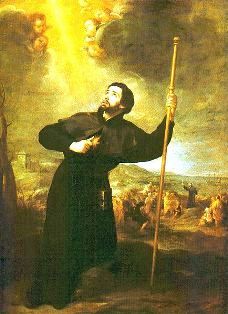 |
3rd December - Memorial of St. Francis Xavier, Priest. Born - Francisco de Jasso y Azpilicueta, 7 April 1506, Javier, Kingdom of Navarre (present-day Spain, France) Died - 3 December 1552 (aged 46), Shangchuan Island, Chuanshan Archipelago, Taishan, China Venerated in - Catholic Church, Anglican Communion, Lutheranism Beatified - 25 October 1619, Rome, Papal States by Pope Paul V Canonized - 12 March 1622, Rome, Papal States by Pope Gregory XV Feast - 3 December Attributes - Cassock, surplice, stole, ferraiolo, and a crucifix Patronage - African missions; Kottar, India; Agartala, India; Ahmedabad, India; Alexandria, Louisiana; Apostleship of Prayer; Australia; Bengaluru, India; Bombay, India; Borneo; Cape Town, South Africa; China; Dinajpur, Bangladesh; East Indies; Fathers of the Precious Blood; foreign missions; Freising, Germany; Goa, India; Fiji; Green Bay, Wisconsin; India; Indianapolis, Indiana; Japan; Key West, Florida; Sophia University, Tokyo, Japan; University of Saint Francis Xavier, Sucre, Bolivia; Joliet, Illinois; Kabankalan, Philippines; Kollam, India; Nasugbu, Batangas, Philippines; Abuyog, Leyte, Philippines; Alegria, Cebu, Philippines; Hong Kong; Macau; Antananarivo, Madagascar; Diocese of Malindi, Kenya; missionaries; Missioners of the Precious Blood; Navarre, Spain; navigators; New Zealand; parish missions; plague epidemics ; Propagation of the Faith; Zagreb, Croatia; Indonesia; Malacca, Malaysia; Brunei; Pakistan; Philippines; Singapore; Sri Lanka A Jesuit missionary, Francis was born in 1506 in the castle of Xavier in Navarre. He was educated in Paris where he met and eventually joined St. Ignatius of Loyola becoming one of a group of seven who took their vows at Montmatre in 1534 and were ordained into the priesthood in Venice three years later. In 1541 Francis and Simon Rodriguez, at the invitation of King John III, sailed for Goa to evangelize the East Indies fortified by a papal brief nominating him as the apostolic nuncio in the east. The journey took thirteen months. There he introduced reforms amongst the Portuguese Catholics and had a great impact amongst the lower caste Indians by preaching and writing verses on the Christian truths set to popular tunes. For the next seven years he worked among the Paravas of southern India, whom he probably saved from extermination, as well as in Ceylon, Malacca, the Molucca Islands and the Malay Peninsula. In 1549 he went to Japan where he continued his missionary activity returning to Goa in 1552 but was on his missionary journeys, this time to China, within a few months. He died later the same year and was canonized by Pope Gregory XV in 1622 and declared Patron of the Foreign Missions by Pope Pius XI in 1927. O God, the preaching of St. Francis Xavier brought many peoples to know you, grant that the hearts of your faithful may burn with the same zeal for the faith and that your Church may everywhere rejoice in an abundance of new members. Amen. See also: https://www.newadvent.org/cathen/06233b.htm https://en.wikipedia.org/wiki/Francis_Xavier https://catholicsaints.info/saint-francis-xavier/ https://www.bartleby.com/210/12/031.html https://saintscatholic.blogspot.com/2018/12/saint-francis-xavier.html http://strobertbellarmine.net/books/Torsellino--Xavier.pdf https://archive.org/details/lifelettersofstf01coleuoft/mode/2up |
||
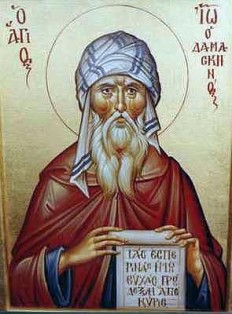 |
4th December - Optional memorial of St. John Damascene, Priest, Doctor of the Church. Born - c. 675 or 676, Damascus, Bilad al-Sham, Umayyad Caliphate Died – 4th December 749, Mar Saba, Jerusalem, Bilad al-Sham, Umayyad Caliphate Venerated in - Eastern Orthodox Church, Roman Catholic Church, Eastern Catholic Churches - Anglican Communion Canonized - Pre-congregation Feast - December 4, March 27 (General Roman Calendar 1890–1969) Attributes - Severed hand, icon Patronage - Pharmacists, icon painters, theology students Born in c. 657 John (Greek: Ἰωάννης ὁ Δαμασκηνός, romanized: Ioánnēs ho Damaskēnós, Latin: Ioannes Damascenus; Arabic: يوحنا الدمشقي, romanized: Yūḥannā ad-Dimashqī), spent his whole life under Muslim rule. His father was a wealthy Damascus Christian who held the post of chief of the revenue and the principal representative of the Christians in the city. Well educated by Cosmas, a Sicilian monk, in 716 John himself became a monk and later a priest at the abbey of St. Sabas near Jerusalem. There he wrote many hymns and theological works. The most important of these was” The Fount of Wisdom”. The last part of this ”De Fide Orthodoxa” had immense influence for centuries in both the Eastern and the Western churches. It is a summary of the teaching of the Greek Fathers on the principal mysteries of the Christian Faith such as the Trinity, the Incarnation, the Assumption of the Blessed Virgin Mary and her preservation from sin, and the Real Presence in the Eucharist. This brought him into conflict with the iconoclastic Christian emperors who were unable to proceed against him because he lived in Muslim territory. John died in c. 749 and was proclaimed a Doctor of the Church in 1890. Grant, O Lord, that we may be helped by the prayers of Saint John Damascene so that the true faith that he professed may always be out light and our strength. See also: https://www.newadvent.org/cathen/08459b.htm https://en.wikipedia.org/wiki/John_of_Damascus https://catholicsaints.info/saint-john-damascene/ https://saintscatholic.blogspot.com/2010/11/saint-john-of-damascus.html |
||
 |
5th December - Feast of St. Birinus, Bishop. Born: unknown Died: 650. The apostle of Wessex and the first bishop of Dorchester, Birinus possibly came from Lombardy and was sent by Pope Honorius I to continue the mission of St. Augustine. He had been consecrated for this task by Asteruis, the archbishop of Milan. Birinus’ original intention had been to penetrate into the Midlands, an area where no preacher had yet been, but he found the West Saxons (Gewissae) so pagan that he decided to stay amongst them. He was assisted by the desire of King Cynegils to be instructed in the Christian faith and by the plan of Oswald, the king of Northumbria to marry Cynegils’ daughter, Cyneburg. Birinus baptised Cynegils and his family and received Dorchester as his see, a Romano-British town conveniently situated at a river crossing and in an area of dense Anglo-Saxon settlement. Of the churches that he built in the area only the one at Wing in Buckinghamshire is a possible survivor. He remained as bishop for fifteen years although, surprisingly, there is no record of any direct contacts between Birinus and the archbishops of Canterbury and there is no record of Wessex bishops in Dorchester after 660. Towards the end of his life Birinus dedicated a church at Winchester. The town was then growing in importance, and it was inevitable that it would become the ecclesiastical centre if the kingdom. Birinus died in 650 and in c. 690, Hedda, the bishop of Winchester, translated his relics there where they remained throughout the Middle Ages being moved to new shrines in 980 and 1150. Perhaps not as widely venerated as he deserves, the principal centres of his cult are in the area where he was most active around Winchester, Dorchester, and Abingdon. We humbly ask you, almighty God, that at the intercession of your Bishop Birinus, you may multiply your gifts within us and so order our days that we may live in peace with our neighbours and with ourselves. See also: https://www.newadvent.org/cathen/02578a.htm https://en.wikipedia.org/wiki/Birinus |
||
 |
6th December - Optional memorial of St. Nicholas, Bishop. Born - Traditionally 15 March 270, Patara, Roman Empire Died - Traditionally 6 December 343 (aged 73), Myra, Roman Empire Venerated in - All Christian denominations which venerate saints. Major shrine - Basilica di San Nicola, Bari, Italy Feast - 5/6 December in Western Christianity; 19 December in Eastern Christianity (main feast day – Saint Nicholas Day), 22 May [O.S. 9 May] (translation of relics) Attributes - Vested as a Bishop. In Eastern Christianity, wearing an omophorion and holding a Gospel Book. Sometimes shown with Jesus Christ over one shoulder, holding a Gospel Book, and with the Theotokos over the other shoulder, holding an omophorion, holding three golden balls or coins. Patronage - Children, coopers, sailors, sex workers, fishermen, merchants, broadcasters, the falsely accused, repentant thieves, brewers, pharmacists, archers, pawnbrokers, unmarried people, Prilep, Aberdeen, Galway, Russia, Greece, Hellenic Navy, Liverpool, Bari, Siggiewi, Moscow, Amsterdam, Lorraine, Royal School of Church Music and Duchy of Lorraine, students in various cities and countries around Europe. Although he is one of the most popular saints, almost nothing is known for certain about Nicholas’ life. Tradition puts him in the fourth century and his see at Myra, in Lycia, in south-western Turkey. Attempts to place him as one of the fathers at the Council of Nicea in 325 who had previously been imprisoned during the persecution of Diocletian have been unsuccessful. There can be no doubt about the antiquity of his cult which was clearly established in the east from the sixth century that was increased by a fictitious biography by Methodius and became widely known in the west in the tenth century. When Myra and its shrine were taken by the Moslems Nicholas’ relics were translated to Bari in 1087. Butler, in his Lives of the Saints, has the following account of the translation of the relics of St. Nicholas, "Certain merchants of Bari, a seaport in the kingdom of Naples situated on the Adriatic Gulf, sailed in three ships to the coast of Lycia…. went to the church in which the relics of St. Nicholas were kept, which stood in a desert place three miles from the sea, and was guarded by a small community of monks. They broke open the marble coffin where the sacred bones lay, and carried them off to their ships; the inhabitants, upon the alarm given, pursued them to the shore with horrible outcries, but the Europeans were got safely on board. They landed at Bari on the 9th of May 1087, and the sacred treasure was deposited by the archbishop in the Church of St, Stephen. On the first day, thirty persons were cured of various distempers, imploring the intercession of St. Nicholas, and from that time the tomb of St. Nicholas of Bari has been famous for pilgrimages...". There are numerous tales about him – he is reputed to given three bags of gold to three girls as their marriage dowries to save them from prostitution – hence the three balls of the pawnbroker’s sign. Another tale tells how he miraculously restored to life three boys who had been murdered in a brine tub by a butcher. But perhaps the most popular result of his cult is based on his patronage of children with its attendant custom in the Low Countries of giving them presents on his feast – Santa Claus. Grant, O Lord, that through the prayers of Saint Nicholas, we may be protected from all dangers and follow the way of salvation open before us. See also: https://www.newadvent.org/cathen/11063b.htm https://en.wikipedia.org/wiki/Saint_Nicholas https://catholicsaints.info/saint-nicholas-of-myra/ https://www.christianiconography.info/goldenLegend/nicholas.htm https://www.bartleby.com/210/12/061.html https://saintscatholic.blogspot.com/2018/12/saint-nicholas-of-myra-priest-abbot.html |